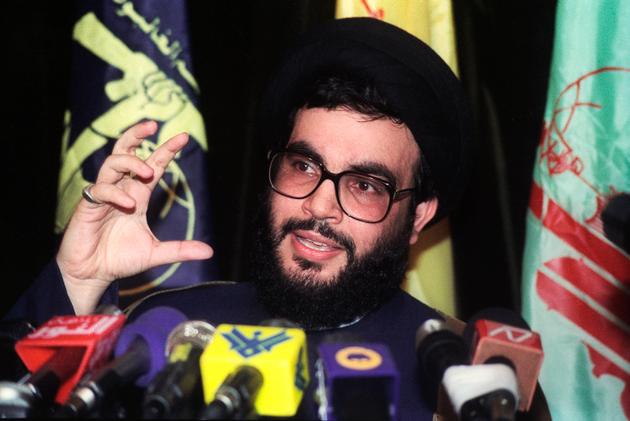


Hassan Nasrallah, Hezbollah's charismatic leader for more than three decades, has died
ObituaryThe head of Lebanon's pro-Iranian militia party was killed on Friday by an Israeli strike in his stronghold in the southern suburbs of Beirut.
With his black turban, reserved for descendants of the Prophet, thin glasses and thick salt-and-pepper beard, Hassan Nasrallah has been the face of Hezbollah for over three decades. At the head of this militia dedicated to armed struggle against Israel, which has become a state above the Lebanese state, the Shiite leader has held the fate of the country in his hands, in war and in peace. The charismatic leader, revered religiously by his followers and feared by his enemies as an unrivaled political and military strategist, died on Friday, September 9, in an Israeli strike on his stronghold in the southern suburbs of Beirut.
Compared to Arab regimes criticized for abandoning the Palestinian cause, the "sayyed," as he is known, has embodied resistance to Israel within the Arab world. He has been worshipped as a new Nasser or an Arab Che Guevara since his troops forced Israel to withdraw from southern Lebanon in 2000, after 22 years of occupation. This heroic aura was further enhanced in the summer of 2006, when Hezbollah defeated Israel's forces in a brief war that lasted 33 days.
An object of fascination in the Middle East, Nasrallah enjoyed influencing the course of History with unparalleled verve, in long speeches laced with religious references, punctuated with humor and threats backed up by a raised finger. A sworn enemy of Israel, considered a terrorist by the United States – but not by France, which maintained a difficult but regular dialogue with those close to him – in lived, since the 2006 war, entrenched in a bunker under the southern suburbs of Beirut to escape assassination attempts.

Iranian influence
His personality matured as he rose through the ranks of the militia party. Born on August 31, 1960 into a Shiite family from southern Lebanon, Nasrallah was the eldest of nine siblings. As a teenager, he began to attend mosques and admired Musa al-Sadr (1928-1978), the Iranian-born religious leader and politician behind the Shiite revival in Lebanon with his Movement of the Disinherited. When, at the start of the Lebanese civil war in 1975 Muslim families were driven out of their neighborhoods by Christian militias, the Nasrallahs returned to live in their home village of Bazouriyeh, near Tyre.
Nasrallah taught religion. He joined the Amal party, founded by Musa al-Sadr, to counterbalance the pan-Arab and left-wing nationalists. At the age of 16, he moved to Nadjaf, Iraq, to pursue his religious studies. Sayyed Abbas al-Moussaoui (1952-1992), a Lebanese like himself, became his mentor. Mohammed Bakr al-Sadr (1935-1980) saw a brilliant student in him. Along with Ayatollah Ruhollah Khomeini (1902-1989), Bakr al-Sadr was one of the architects of "velayat-e faqih," the concept of the primacy of religion over political power that the 1979 Islamic revolution in Iran would impose as a model of government.
You have 77.74% of this article left to read. The rest is for subscribers only.
